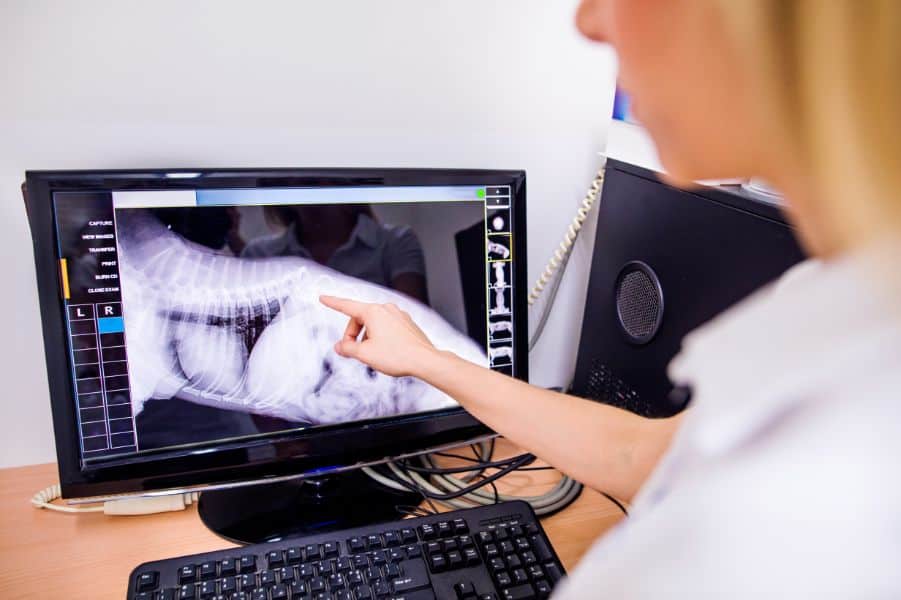The Digital Age: The Role of Digital Imaging in Veterinary Medicine

Technology gets better (and faster) almost every day, and veterinary medicine has benefited from these innovations. Over the last century we have gone from James Herriot-style farm vets to the ability to perform organ transplants – a pretty remarkable jump, in our estimation.
At Dupont Veterinary Clinic, veterinary technology is particularly visible in our daily imaging abilities. From X-rays to ultrasound and beyond, digital imaging in veterinary medicine is improving and changing for the better all the time.
The Role of Imaging in Veterinary Care
When we see your pet for a health concern, one of the first things we do is talk to you about the symptoms of the issue before your veterinarian undertakes a nose-to-tail physical examination. Your observations (and ours) provide us with a lot of information, and often helps us to arrive at a diagnosis.
Many times, however, further information is needed. In this situation diagnostic testing is recommended. What testing is recommended depends a lot on the individual situation, however most often some type of blood or urine testing and/or diagnostic imaging is the next step.
The most common forms of veterinary diagnostic imaging we recommended include:
Radiographs – More commonly known as X-rays, radiographs utilize gamma rays to create a two-dimensional picture of your pet’s insides. On an X-ray we can see bones as well as shadows of many abdominal and thoracic organs. While we cannot see many details or things like ligaments or tendons, radiographs can allow us to assess the relative size, shape, and position of organs as well as the integrity of bony structures.
Ultrasound – Ultrasound is an alternative imaging modality that harnesses sound waves to help produce a real-time image of the contents of the chest or abdomen. Ultrasound can provide more detailed information about internal organs and help to guide us in taking samples of tissues and fluids.
Other forms of digital imaging such as CT scans, fluoroscopy, and MRIs are also utilized when necessary in veterinary medicine.
The Advantages of Digital Imaging in Veterinary Medicine
Not so long ago, imaging existed in veterinary medicine but was not digital. Much like developing film from a camera, we were able to create helpful images but our capacity was limited.
The advancement of digital imaging in veterinary medicine has allowed us to become so much more proficient at diagnosing and treating our pet patients.
Digital imaging has several advantages over analog, including:
- A more detailed and clearer image
- Faster results
- Less radiation exposure for both pet patients and veterinary technicians obtaining the images
- Easy access to consultation with a veterinary radiologist
- Portability of images
- The ability to adjust contrast and other details with little difficulty
- The means to create a secure, tamper evident image for the medical record
We at Dupont Veterinary Clinic are thrilled with digital imaging for our pet patients. Digital imaging in veterinary medicine has allowed us to provide the best and most current services to our clients. This often means getting an answer more quickly and efficiently, which helps us to meet our goal of getting our patients feeling better, faster.
